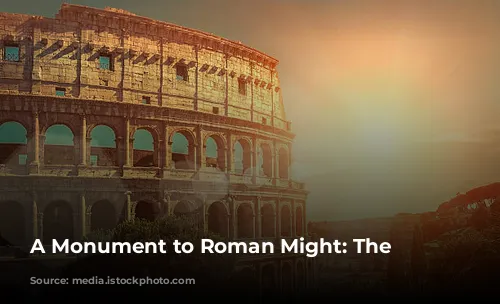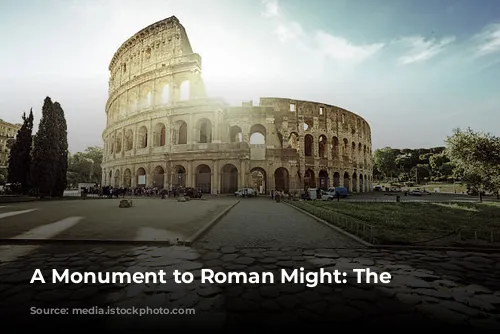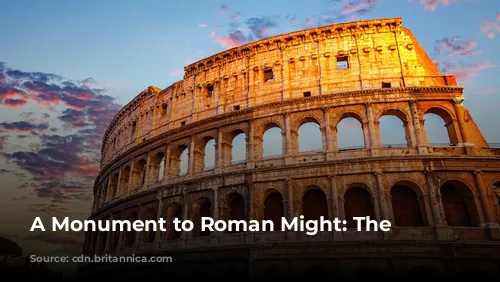The Colosseum, a towering testament to ancient Roman engineering and architecture, stands today as one of the few remaining intact structures from the Roman Empire. This magnificent amphitheater not only captures the spirit of a bygone era but also serves as a major contributor to the Italian government’s tourism revenue. In 2018, the Colosseum, Roman Forum, and Palatine Hill combined to generate a staggering $63.3 million (€53.8 million), solidifying their place as the most lucrative tourist attraction in Italy.
This paragraph introduces the topic of the Colosseum and highlights its significance as a historical landmark and economic driver.
A History of Decline and Rebirth
The Colosseum, like many other Roman structures, fell into a state of disrepair following the fall of the Western Roman Empire. During the 12th century, the Frangipane and Annibaldi families, powerful Roman families, repurposed the arena, transforming it into their fortress. In the late 15th century, Pope Alexander VI, seeking building materials, allowed the Colosseum to be used as a quarry. After over a thousand years of neglect, state-funded restoration efforts began in the 1990s, marking a turning point in the Colosseum’s journey to regain its former glory.
This section chronicles the Colosseum’s neglect and the subsequent restoration efforts that brought it back from the brink of ruin.
A Venue for Blood and Spectacle
The Colosseum’s construction began under the Roman emperor Vespasian between 70 and 72 CE, a period of political turmoil known as the Year of the Four Emperors. Vespasian, aiming to revitalize Rome and provide entertainment for the populace, intended the Colosseum to be a grand arena for gladiatorial combat, animal hunts, and even mock naval battles.
This section explains the Colosseum’s origins and the purpose behind its construction.
A Monument to Conquest and Power
The completed structure, dedicated in 80 CE by Vespasian’s son and successor, Titus, showcased Roman imperial power. The Colosseum’s construction was funded by the spoils of war, specifically from Titus’s sack of Jerusalem in 70 CE. The enslaved Jews from Judaea, forced into labor, contributed to the construction of this monumental arena.
This section delves into the financing of the Colosseum and reveals the connection between its construction and Roman conquest.
An Architectural Masterpiece
The Colosseum, also known as the Flavian Amphitheatre, is an elliptical structure made of stone, concrete, and tuff, towering four stories high. Measuring 620 by 513 feet (189 by 156 meters), it could accommodate up to 50,000 spectators. Its immense size and architectural ingenuity made it a marvel of Roman engineering.
This section describes the physical characteristics of the Colosseum, highlighting its dimensions and materials.

From Private Lake to Public Arena
The Colosseum’s location, just east of the Palatine Hill, holds a symbolic significance. Situated on the grounds of Nero’s Golden House, it replaced the artificial lake that was the centerpiece of the opulent palace complex. This decision, symbolic as it was practical, served as a testament to Vespasian’s ambition to replace Nero’s tyranny with a public arena that would cater to the needs of the Roman populace.
This section explores the symbolic significance of the Colosseum’s location and the motivations behind its placement.

A Monument to Roman Engineering and Architectural Genius
The Colosseum, unlike earlier amphitheaters, stands as a freestanding structure of stone and concrete. Its construction employed a complex system of barrel vaults and groin vaults, showcasing Roman engineering prowess. Three of the arena’s stories are encircled by arcades framed by engaged columns in the Doric, Ionic, and Corinthian orders, a testament to Roman architectural elegance.
This section further analyzes the Colosseum’s architectural innovations and its significance in the development of architectural styles.
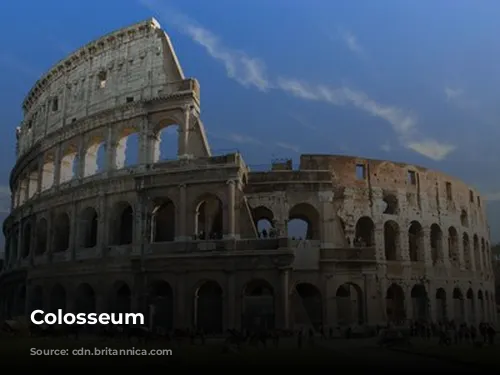
Ensuring Comfort for the Crowd
The Colosseum provided a comfortable viewing experience for its massive audience. A retractable velarium, a massive awning, shielded spectators from the sun. The awning was supported by masts extending from corbels built into the top story, and hundreds of Roman sailors were required to manipulate the rigging.
This section discusses the innovative design features of the Colosseum that ensured comfort and practicality for the spectators.
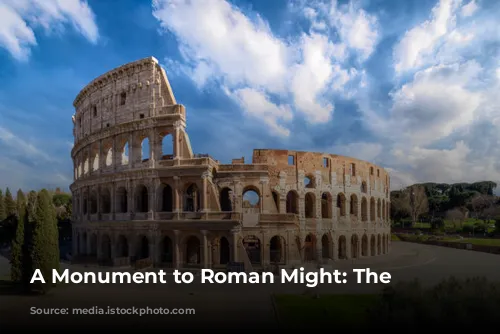
A Stage for Gladiatorial Combat and More
The Colosseum witnessed countless spectacles, including gladiatorial combats, contests between men and animals, and even mock naval engagements. While the Colosseum is often associated with gladiatorial combat, the exact nature of its use and the role it played in the martyrdom of early Christians remain uncertain.
This section discusses the various events that took place in the Colosseum and explores the ambiguity surrounding its role in Christian history.
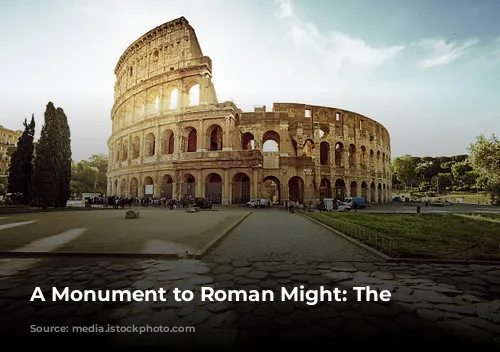
From Glory to Ruin and Back
In medieval times, the Colosseum was repurposed, serving first as a church and later as a fortress for the Frangipane and Annibaldi families. Over time, it suffered damage from lightning, earthquakes, vandalism, and pollution. The Colosseum’s marble seats and decorative materials disappeared, leaving it a mere quarry for over a thousand years.
This section explains the Colosseum’s decline during the medieval period and the subsequent stripping of its valuable materials.
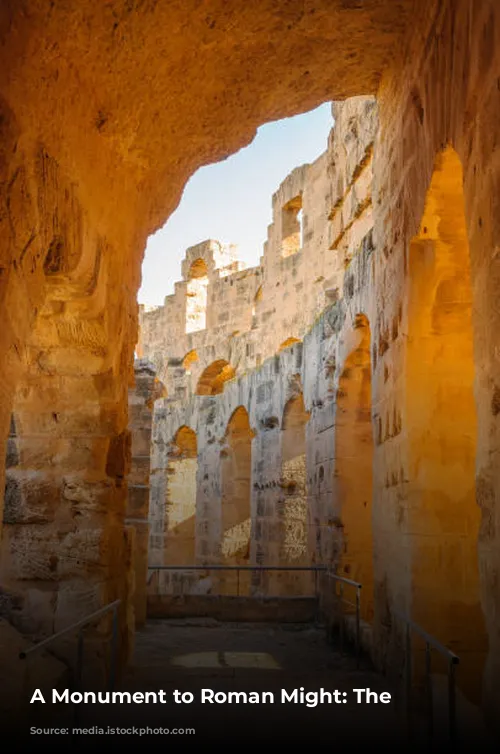
A Rebirth through Restoration
The Colosseum’s preservation began in earnest in the 19th century, with notable efforts led by Pope Pius VIII. In the 1990s, a comprehensive restoration project revitalized the ancient arena, transforming it into a major tourist attraction.
This section highlights the Colosseum’s preservation efforts and the significant restoration project that breathed new life into the ancient monument.
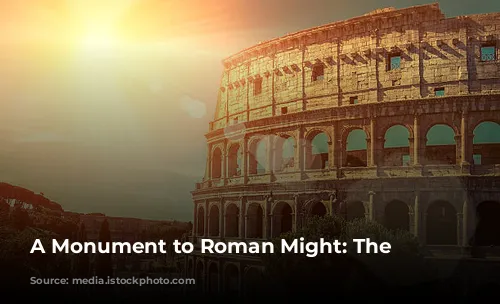
A Legacy of Roman Grandeur
Today, the Colosseum stands as a testament to Roman grandeur, attracting millions of visitors every year. It remains a powerful symbol of ancient Roman civilization, showcasing its architectural prowess, engineering ingenuity, and capacity for spectacle. The Colosseum’s enduring legacy serves as a reminder of the power and influence of the Roman Empire.
This concluding paragraph summarizes the Colosseum’s significance as a historical landmark and a testament to the enduring legacy of the Roman Empire.

